- Common Problems with Apricot Trees
- Poor Pollination and Fertilization
- Lack of Sunlight
- Incorrect Pruning Techniques
- 1. Pruning at the wrong time:
- 2. Over-pruning:
- 3. Pruning for aesthetics only:
- 4. Pruning too aggressively:
- 5. Neglecting pruning altogether:
- Pest Infestation
- Types of Pests
- Prevention and Treatment
- Disease and Fungal Infections
- 1. Bacterial Canker
- 2. Brown Rot
- 3. Leaf Curl
- 4. Plum Pox Virus
- 5. Powdery Mildew
- Watering and Moisture Issues
- 1. Overwatering
- 2. Underwatering
- 3. Uneven watering
- 4. Poor drainage
- 5. Moisture stress during flowering
- Soil Imbalances
- Insufficient Nutrient Supply
- Common Nutrient Deficiencies:
- Question-answer:
- Why is my apricot tree not bearing fruit?
- How can I ensure pollination for my apricot tree?
- Can I grow an apricot tree indoors?
- What kind of pruning is necessary for apricot trees?
- Is it possible to grow apricots from seeds?
- What are some common diseases that can affect apricot trees?
- Video: Pruning An Apricot Tree For Better Fruit Productivity
Apricots are delicious fruits that are highly prized for their sweet flavor and juicy flesh. However, apricot trees sometimes fail to bear fruit, leaving homeowners and gardeners frustrated. There are several factors that can contribute to this problem, from improper pollination to poor pruning techniques.
One common reason why apricot trees do not bear fruit is a lack of pollination. Apricots, like many fruit trees, rely on bees and other pollinators to transfer pollen from the male flowers to the female flowers. If there are not enough pollinators in the area or if the weather conditions are unfavorable for pollination, the tree may fail to produce fruit. To address this issue, you can try planting companion plants that attract pollinators or using techniques such as hand pollination.
Another potential cause of apricot tree fruitlessness is improper pruning. Apricots produce fruit on spurs, which are short branches that develop on the previous year’s growth. If you prune the tree too heavily or at the wrong time of year, you may inadvertently remove these fruit-bearing spurs. It’s important to prune apricots correctly, removing dead or diseased wood but leaving enough healthy branches to support fruit production. Consulting a gardening expert or a comprehensive pruning guide can help you learn the proper techniques.
In addition to pollination and pruning, other factors that can influence apricot tree fruitfulness include insufficient sunlight, poor soil conditions, and inadequate irrigation. Apricot trees require full sun to thrive and produce fruit, so if your tree is not getting enough sunlight, consider pruning surrounding vegetation or moving the tree to a sunnier location. Similarly, apricots prefer well-draining soil with a pH level between 6.0 and 7.5. If your soil is too acidic or alkaline, you may need to amend it with organic matter or adjust the pH levels. Finally, apricot trees need regular watering, especially during dry spells. Make sure to provide deep, infrequent irrigation rather than frequent shallow watering to encourage healthy root growth and fruit production.
With proper attention to pollination, pruning, sunlight, soil conditions, and irrigation, you can help your apricot tree bear bountiful fruit. By understanding the factors that can contribute to fruitlessness and taking appropriate actions, you can enjoy the sweet rewards of a productive apricot tree in your own backyard.
Common Problems with Apricot Trees
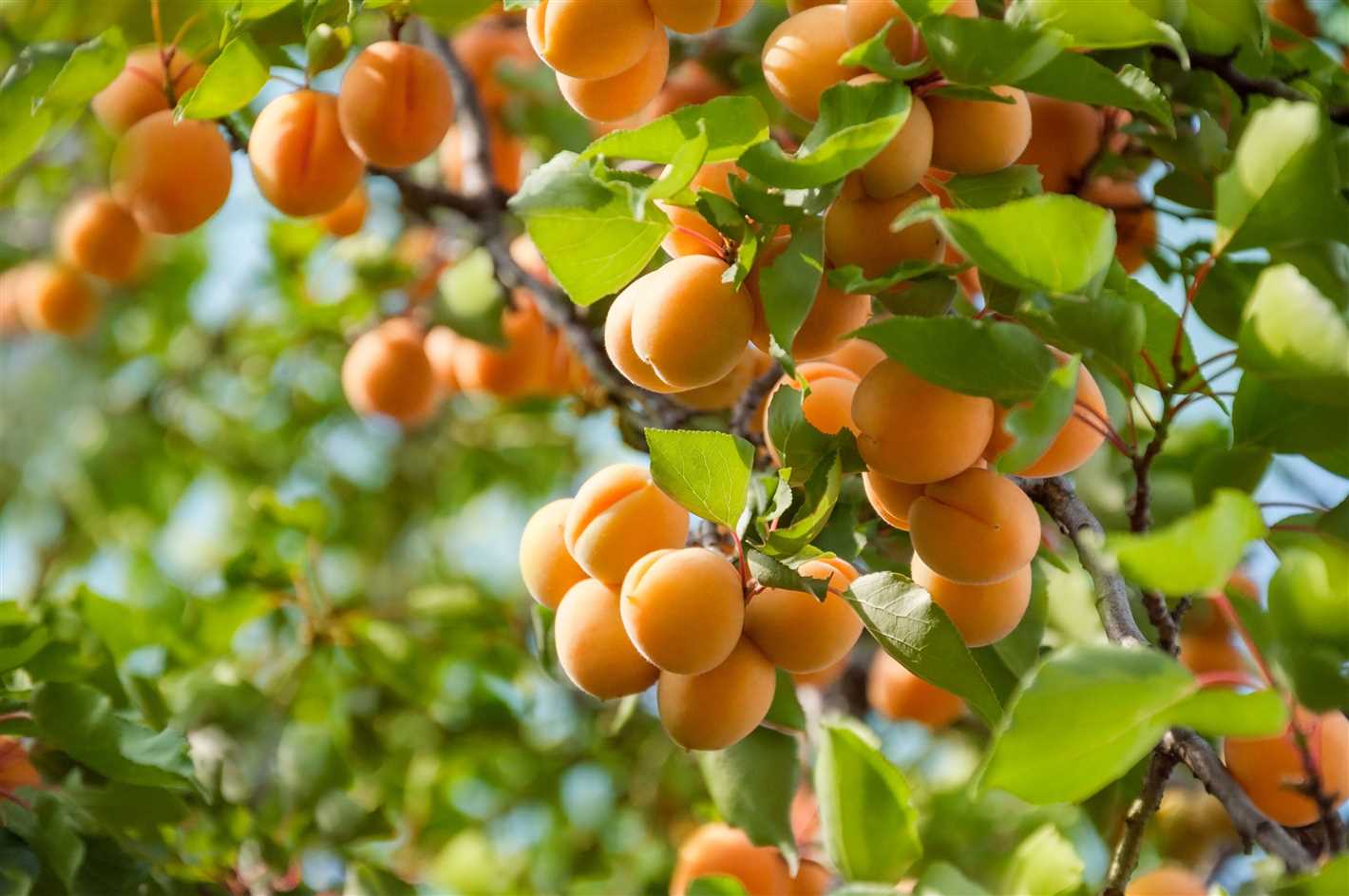
Apricot trees can face a variety of common problems that can affect their ability to bear fruit. Here are some of the most prevalent issues:
- Poor Pollination: One common problem is poor pollination, which can lead to a lack of fruit production. Bees and other pollinating insects are crucial for ensuring successful pollination in apricot trees. If there is a lack of pollinators in your area, you may need to consider hand pollination methods.
- Insufficient Watering: Apricot trees require regular watering, especially during dry periods. Insufficient watering can lead to stress and cause the tree to drop its blossoms. To avoid this problem, make sure to water your apricot tree deeply and regularly.
- Frost Damage: Apricot trees are susceptible to frost damage, particularly during late winter or early spring when they are in bloom. Freezing temperatures can destroy the blossoms, resulting in a decreased fruit set. To protect your apricot tree from frost, consider using frost blankets or other protective measures.
- Pest Infestations: Apricot trees can be affected by various pests, including aphids, mites, and scale insects. These pests feed on the tree’s leaves and sap, which can weaken the tree and reduce fruit production. Regular inspection and appropriate pest control measures can help prevent infestations and maintain the health of your apricot tree.
- Disease: Apricot trees are susceptible to various diseases, such as brown rot, bacterial canker, and powdery mildew. These diseases can affect the tree’s overall health and fruit production. Proper pruning, sanitation, and the use of disease-resistant varieties can help prevent and control diseases in apricot trees.
- Improper Pruning: Pruning is essential for maintaining the shape and health of apricot trees. However, improper pruning techniques can disrupt the tree’s growth and affect its ability to produce fruit. It’s important to learn proper pruning methods for apricot trees or seek guidance from a knowledgeable arborist.
By addressing these common problems and providing the necessary care to your apricot tree, you can enhance its fruit production and enjoy a bountiful harvest.
Poor Pollination and Fertilization
One of the main reasons why apricot trees may not bear fruit is poor pollination and fertilization. Apricots are primarily self-pollinating, meaning they do not rely heavily on insects or wind to transfer pollen between flowers. However, successful pollination depends on the movement of pollen from the anthers (male reproductive parts) to the pistil (female reproductive part) within the same flower or between different flowers on the same tree.
Several factors can contribute to poor pollination and fertilization in apricot trees:
- Lack of compatible pollinators: Although apricots are self-pollinating, having a different apricot cultivar nearby can improve pollination rates. Planting two different cultivars can increase the likelihood of cross-pollination and improve fruit set.
- Unfavorable weather conditions: Adverse weather conditions during the blooming period, such as heavy rain or strong winds, can affect pollinators’ activity and hinder the transfer of pollen.
- Pesticide use: Excessive use of pesticides, particularly during the blooming period, can harm or deter pollinators, reducing pollination rates.
- Insufficient insect activity: The presence of bees, butterflies, and other pollinating insects is crucial for effective pollination. Lack of suitable habitats or the use of insecticides can reduce insect activity and limit pollination.
- Physical barriers: Apricot trees grown in greenhouses or under protective covers may have limited exposure to pollinators, resulting in poor pollination.
To correct poor pollination and fertilization in apricot trees, consider the following measures:
- Plant compatible cultivars: If possible, plant different apricot cultivars near each other to improve cross-pollination rates.
- Encourage pollinators: Create a pollinator-friendly environment by planting flowers that attract bees and other pollinators around the apricot trees. Avoid using pesticides during the blooming period or use bee-friendly alternatives when necessary.
- Hand pollination: If pollinators are scarce or weather conditions are unfavorable, manual hand pollination can be performed. Use a small brush or cotton swab to transfer pollen from the anthers to the pistil within the same flower or between flowers.
- Protect pollinators: Provide suitable habitats for pollinators by planting wildflowers, providing water sources, and avoiding the use of harmful chemicals near the apricot trees.
By addressing poor pollination and fertilization issues, you can increase the chances of apricot trees bearing fruit and enjoy a bountiful harvest.
Lack of Sunlight
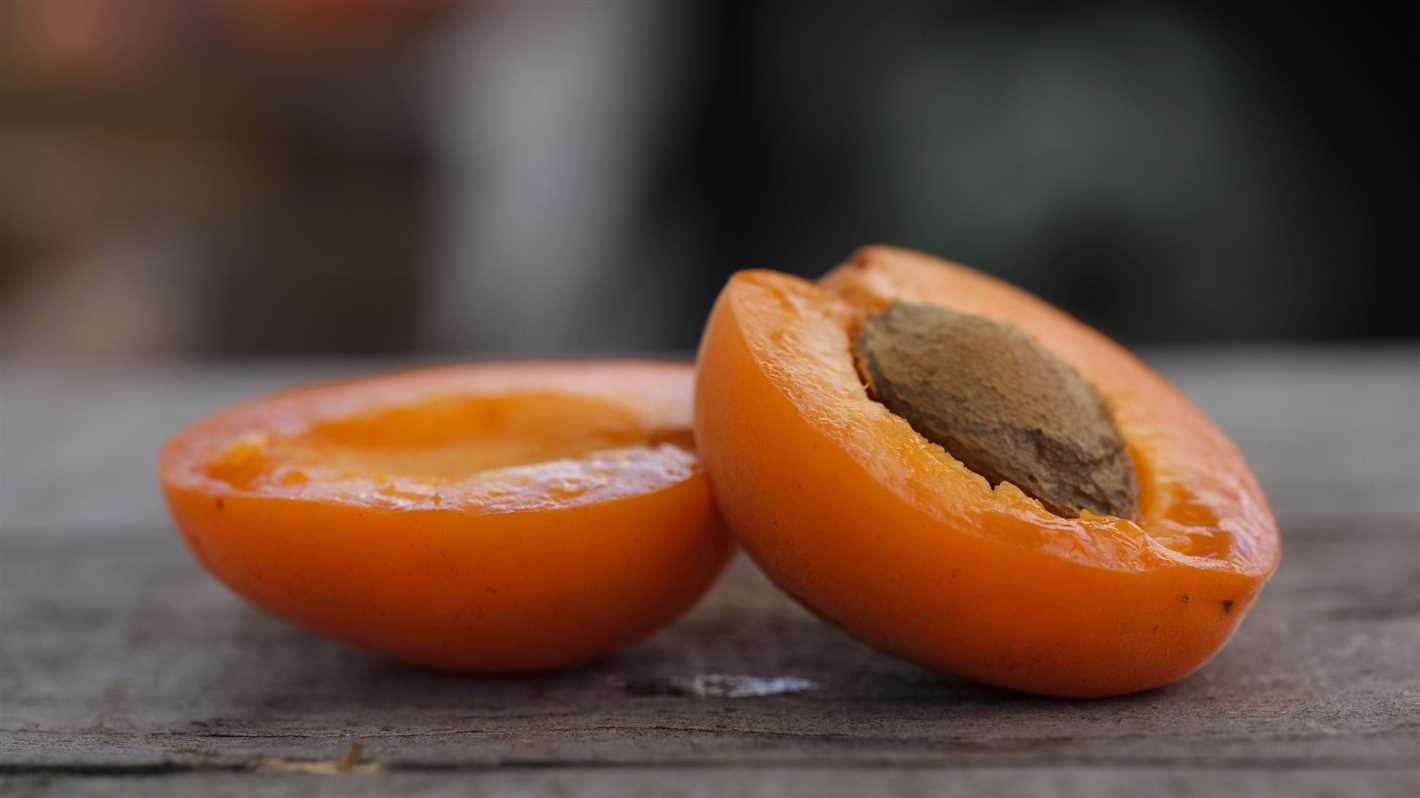
Apricot trees require a significant amount of sunlight in order to produce fruit. Lack of sunlight can be a common reason why apricot trees fail to bear fruit.
Effects of Lack of Sunlight on Apricot Trees:
- Reduced Photosynthesis: Sunlight is crucial for the process of photosynthesis, which is essential for the production of energy and nutrients in the apricot tree. Without sufficient sunlight, the tree may not be able to generate enough energy to support fruit production.
- Poor Flowering: Apricot trees need sunlight to trigger the blooming process. Insufficient sunlight can result in poor flowering, as the tree may not receive the necessary signals to produce flowers.
- Weakened Fruit Development: Sunlight is essential for the development of healthy and nutritious fruits. Without enough sunlight, the fruits may fail to reach their full size and may lack flavor and proper ripening.
How to Address the Issue:
- Choose the Right Location: When planting an apricot tree, select a location that receives full sun for at least 6-8 hours a day. Avoid areas with significant shade or obstruction from buildings or trees.
- Prune Overhanging Branches: If nearby trees or structures are casting shade on the apricot tree, prune or trim the overhanging branches to allow more sunlight to reach the tree.
- Thin the Canopy: If the apricot tree has a dense canopy that blocks sunlight from reaching the lower branches, consider thinning the canopy to improve light penetration and air circulation.
- Utilize Reflective Surfaces: Place reflective surfaces, such as white stones or reflective mulch, around the base of the apricot tree to help redirect sunlight towards the tree.
- Consider Artificial Lighting: In situations where natural sunlight is limited, supplemental artificial lighting can be used to provide the required amount of light for the apricot tree.
| Step | Description |
|---|---|
| 1 | Choose the Right Location |
| 2 | Prune Overhanging Branches |
| 3 | Thin the Canopy |
| 4 | Utilize Reflective Surfaces |
| 5 | Consider Artificial Lighting |
Incorrect Pruning Techniques
Pruning is an important part of apricot tree care, as it helps maintain the tree’s shape, improve air circulation, and promote fruit production. However, incorrect pruning techniques can lead to issues with fruiting. Here are some common mistakes to avoid:
1. Pruning at the wrong time:
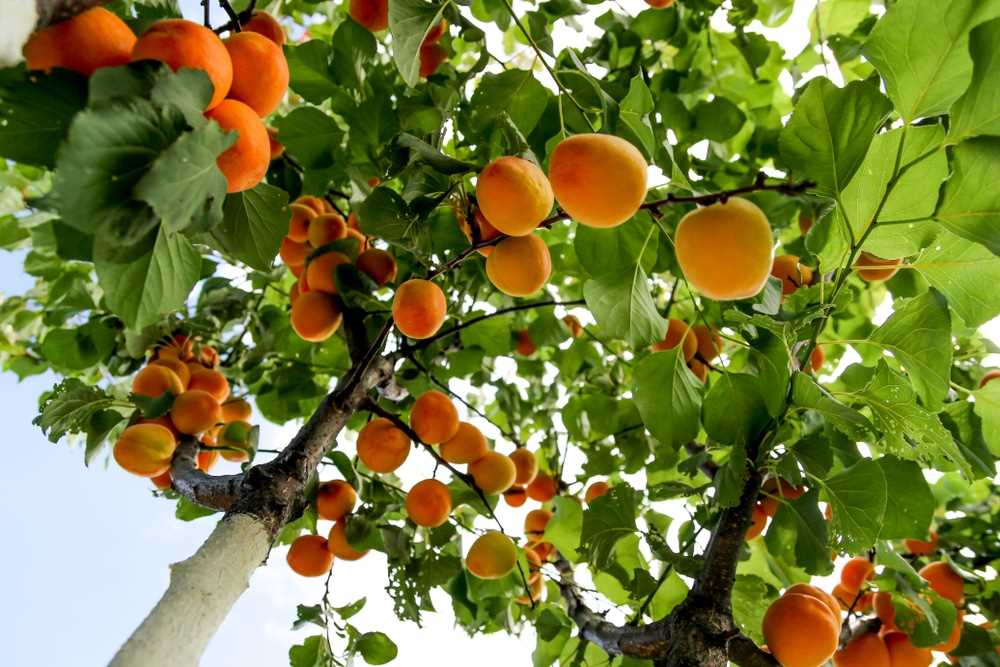
Apricot trees should be pruned during their dormant period, which is typically in late winter or early spring before new growth begins. Pruning at other times can disrupt the tree’s natural growth cycle and reduce fruit production.
2. Over-pruning:
While pruning is necessary for the health of the tree, over-pruning can have negative effects. Removing too many branches can reduce the tree’s ability to produce fruit and disrupt its overall structure. It is important to follow proper pruning guidelines and avoid excessive removal of healthy branches.
3. Pruning for aesthetics only:
Some gardeners may prune their apricot trees solely for aesthetic purposes, disregarding the tree’s fruit production. It is crucial to maintain a balance between aesthetics and fruiting potential. Prune with the goal of maintaining a healthy structure and promoting fruiting.
4. Pruning too aggressively:
Aggressive pruning, such as topping the tree or removing a large portion of its branches, can result in a reduced fruiting capacity. It is best to follow proper pruning practices, such as thinning out overcrowded branches and maintaining a balanced canopy.
5. Neglecting pruning altogether:
On the other hand, neglecting to prune apricot trees can also lead to reduced fruit production. Regular pruning helps remove dead or diseased wood, stimulates new growth, and opens up the canopy for better air circulation and sunlight penetration.
In conclusion, proper pruning techniques are crucial for apricot trees to bear fruit. Avoid common pruning mistakes, such as pruning at the wrong time, over-pruning, pruning for aesthetics only, pruning too aggressively, or neglecting pruning altogether. By following correct pruning practices, you can help ensure a healthy and fruitful apricot tree.
Pest Infestation
Pest infestations can be a common reason why apricot trees fail to bear fruit. There are several pests that can attack apricot trees, including aphids, mites, scale insects, and borers. These pests can damage the leaves, flowers, and fruit, leading to poor or no fruit production.
Types of Pests
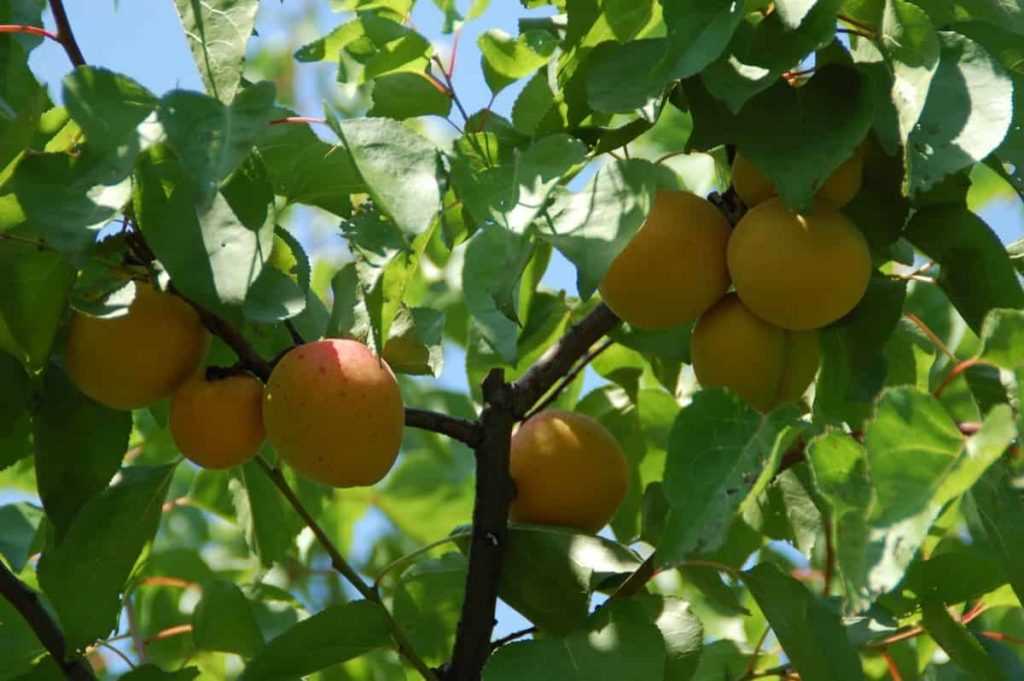
1. Aphids: These small insects feed on the sap of the apricot tree, causing the leaves to curl and distort. The distorted leaves can affect photosynthesis, reducing the overall health and fruit production of the tree.
2. Mites: Several species of mites can infest apricot trees. They typically attack the underside of leaves, causing them to become yellow and mottled. Severe infestations can weaken the tree and lead to decreased fruit production.
3. Scale Insects: Scale insects are small, immobile pests that attach themselves to the branches and leaves of the apricot tree. They feed on the sap, weakening the tree and reducing its ability to produce fruit. Scale insects also excrete a sticky substance called honeydew, which can attract ants and promote the growth of sooty mold on the leaves.
4. Borers: Borers are beetle larvae that tunnel into the trunk or branches of the apricot tree. Their feeding activity can weaken the tree and disrupt the flow of water and nutrients, leading to stunted growth and poor fruit production.
Prevention and Treatment
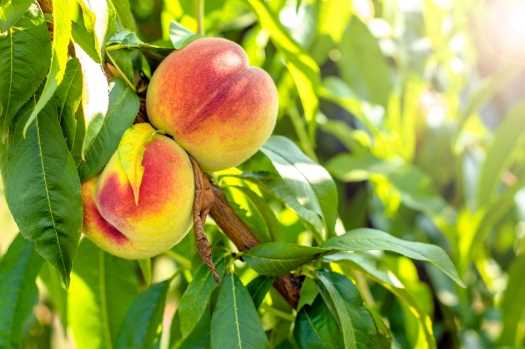
1. Regular Inspection: Regularly inspect your apricot tree for any signs of pest infestation. Look for curled or distorted leaves, yellowing or mottled foliage, sticky residue on leaves and branches, and visible signs of borers such as holes or sawdust-like frass.
2. Pruning and Sanitation: Remove any infested branches or leaves as soon as you notice them. Prune the tree during the dormant season to remove any borer-infested wood. Keep the area around the tree clean by removing fallen leaves and debris, as they can harbor pests.
3. Biological Control: Introduce natural predators of the pests into your garden, such as ladybugs for aphids or predatory mites for other mites. These predators can help keep pest populations in check.
4. Chemical Control: If a severe infestation occurs, you may need to use insecticides or miticides to control the pests. Follow the instructions on the product label carefully and apply the chemicals in the recommended dosage and timing to minimize harm to beneficial insects and the environment.
By taking proactive measures to prevent and treat pest infestations, you can improve the overall health of your apricot tree and increase its chances of bearing fruit. Regular monitoring and prompt action are key to successfully managing pest problems.
Disease and Fungal Infections
Apricot trees are susceptible to various diseases and fungal infections that can prevent them from bearing fruit. Identifying and treating these issues is essential for ensuring a healthy and productive apricot tree.
1. Bacterial Canker
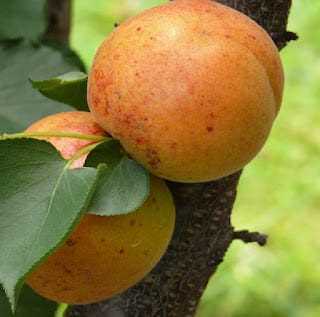
Bacterial canker is a common disease in apricot trees caused by the bacterium Pseudomonas syringae. It affects the bark, causing cankers that ooze sap and eventual dieback of branches. Infected trees may have reduced fruit production or may not bear fruit at all.
- Symptoms: Sunken patches of bark, gumming or oozing sap, branch dieback.
- Treatment: Prune infected branches, disinfect pruning tools, and apply copper-based fungicides during dormancy.
2. Brown Rot
Brown rot is a fungal disease that affects apricot trees, causing fruit rot and loss. The fungus Monilinia spp. thrives in warm and humid conditions, infecting blossoms, fruit, and shoots.
- Symptoms: Brown, rotting fruit with a fuzzy texture, blossom blight.
- Treatment: Remove and destroy infected fruit and debris, improve air circulation, and apply fungicides during bloom and fruit development.
3. Leaf Curl
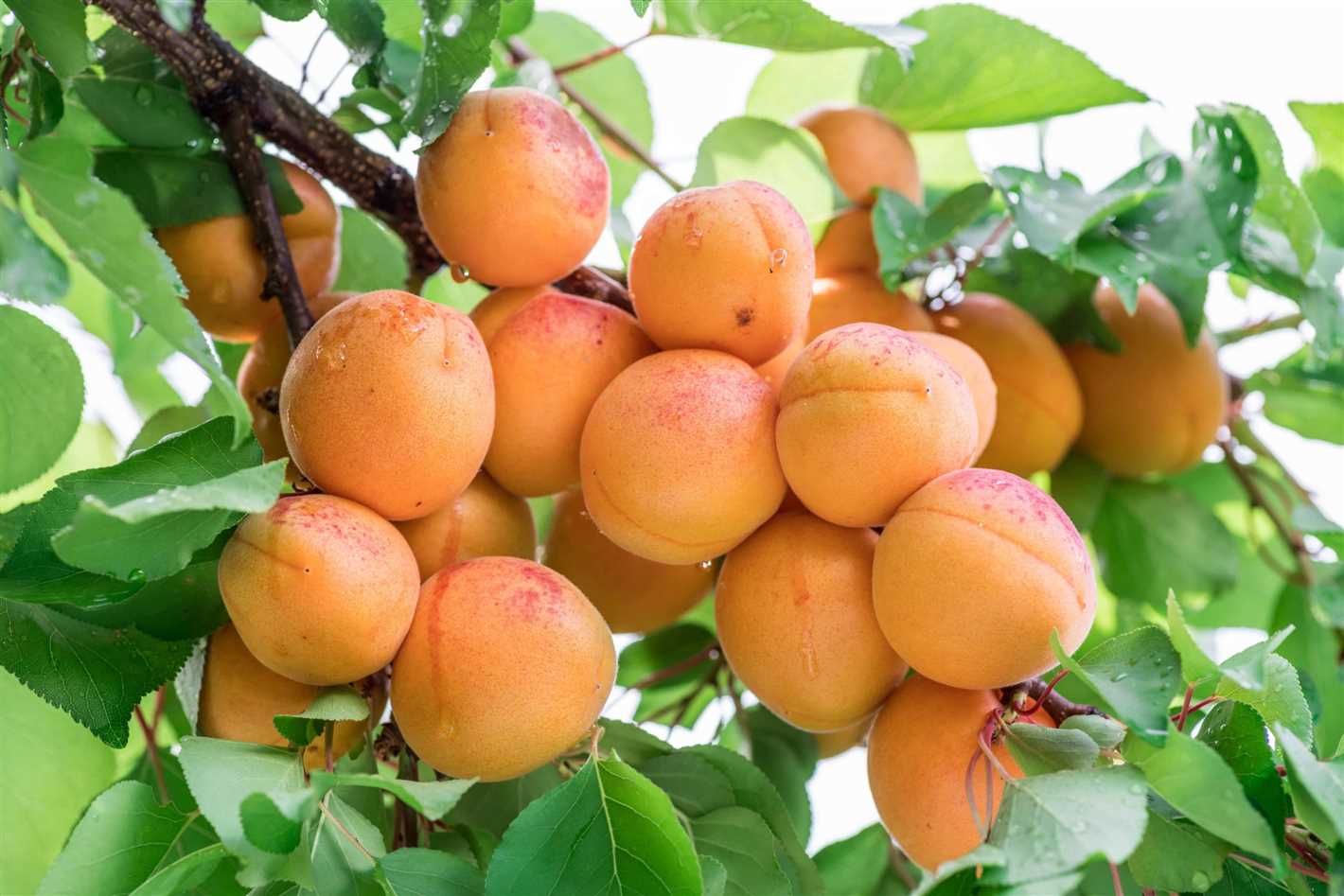
Leaf curl is a common fungal infection in apricot trees caused by the pathogen Taphrina deformans. It affects the leaves, causing them to curl, distort, and become discolored. Severe infections can lead to reduced fruit production.
- Symptoms: Curled, distorted leaves with red or purple discoloration.
- Treatment: Prune and destroy diseased branches, apply copper-based fungicides during dormancy, and improve overall tree health.
4. Plum Pox Virus
Plum pox virus is a devastating disease that affects various stone fruit trees, including apricot trees. It is transmitted by aphids and causes severe damage to the fruit, leading to reduced fruit production or complete fruit drop.
- Symptoms: Yellow rings or spots on leaves, deformed or discolored fruit.
- Treatment: There is no cure for plum pox virus. Infected trees should be removed and destroyed to prevent the spread of the disease.
5. Powdery Mildew
Powdery mildew is a fungal infection that affects many fruit trees, including apricot trees. It appears as a white, powdery coating on the leaves, shoots, and fruits, hindering photosynthesis and reducing fruit production.
- Symptoms: White, powdery coating on leaves, shoots, and fruit.
- Treatment: Improve air circulation, prune and destroy infected plant parts, and apply fungicides as needed.
By being vigilant and proactive in identifying and treating diseases and fungal infections, apricot tree owners can increase their chances of having healthy and fruit-bearing trees. Regular tree maintenance, proper sanitation, and timely treatment are key to managing these issues and ensuring optimal apricot tree productivity.
Watering and Moisture Issues
Watering is a critical factor in the successful fruiting of apricot trees. Improper watering can contribute to the tree’s failure to bear fruit. Here are some common watering and moisture issues that you should be aware of:
1. Overwatering
One of the most common mistakes made by apricot tree owners is overwatering. While apricots like a consistently moist soil, they do not tolerate excessive moisture. Overwatering can lead to root rot and make the tree more susceptible to diseases and pests. It is important to water the apricot tree deeply, but not excessively. The soil should be allowed to dry out slightly between waterings.
2. Underwatering
On the other hand, underwatering can also hinder fruiting in apricot trees. Inadequate watering can cause the tree to become stressed and may result in reduced flower production. It is important to provide enough water to keep the soil moist, especially during dry spells or periods of high heat. Mulching around the base of the tree can help retain moisture and prevent water loss through evaporation.
3. Uneven watering
Apron its are more likely to produce fruit when they receive consistent and even watering. Fluctuations in moisture levels can stress the tree and disrupt its reproductive capabilities. To ensure even watering, consider using a soaker hose or drip irrigation system. These methods deliver water directly to the roots, minimizing water loss and providing a steady supply of moisture to the tree.
4. Poor drainage
Apricot trees need well-draining soil to thrive. Poor drainage can lead to waterlogged roots, which can in turn lead to root rot and other moisture-related issues. If your soil retains water excessively, consider amending it with organic matter or creating raised beds to improve drainage. Additionally, avoid planting apricot trees in low-lying areas or areas prone to flooding.
5. Moisture stress during flowering
Another critical watering issue to consider is moisture stress during the flowering period. Apricot trees require adequate moisture during this time to support flower development and pollination. Insufficient watering during flowering can result in poor fruit set and lower yields. Monitor your apricot tree closely during this period and ensure that it receives enough water.
By paying attention to your apricot tree’s watering and moisture needs, you can help ensure optimal fruiting and a healthy tree. Remember to strike a balance between keeping the soil moist and avoiding excessive moisture to promote the best growing conditions for your apricot tree.
Soil Imbalances
A common reason why apricot trees fail to produce fruit is due to soil imbalances. Apricots require well-drained soil with a pH level between 6.0 and 7.5. When the soil is too acidic or alkaline, it can affect the tree’s ability to absorb essential nutrients.
Identifying Soil Imbalances
One way to identify soil imbalances is through a soil test. This test will measure the pH level, as well as the levels of nutrients such as nitrogen, phosphorus, and potassium. It will also determine the soil’s texture, which can affect drainage.
Correcting Acidic Soil
If the soil test reveals that the soil is too acidic, with a pH level below 6.0, you can correct it by adding lime. Lime raises the soil’s pH level and makes it more alkaline. Apply the lime according to the manufacturer’s instructions, taking into consideration the soil type and the tree’s specific nutrient requirements.
Correcting Alkaline Soil
If the soil test shows that the soil is too alkaline, with a pH level above 7.5, you can correct it by adding sulfur. Sulfur lowers the soil’s pH level and makes it more acidic. Again, follow the manufacturer’s instructions for proper application and dosage.
Improving Drainage
In addition to pH levels, poor drainage can also hinder apricot tree fruiting. If the soil is compacted or has a heavy clay content, it may retain too much water, leading to root rot and nutrient deficiencies. To improve drainage, you can add organic matter such as compost or well-rotted manure to the soil. This will help loosen the soil and promote better water movement.
Fertilizing
To ensure that the apricot tree gets the necessary nutrients, it’s important to fertilize regularly. Use a balanced fertilizer that contains nitrogen, phosphorus, and potassium, as well as micronutrients like calcium and magnesium. Follow the recommended application rates and apply the fertilizer evenly around the tree’s dripline.
Conclusion
Soil imbalances can greatly affect the fruiting capabilities of apricot trees. By addressing pH levels, improving drainage, and providing necessary nutrients through fertilization, you can correct soil imbalances and encourage fruit production.
Insufficient Nutrient Supply
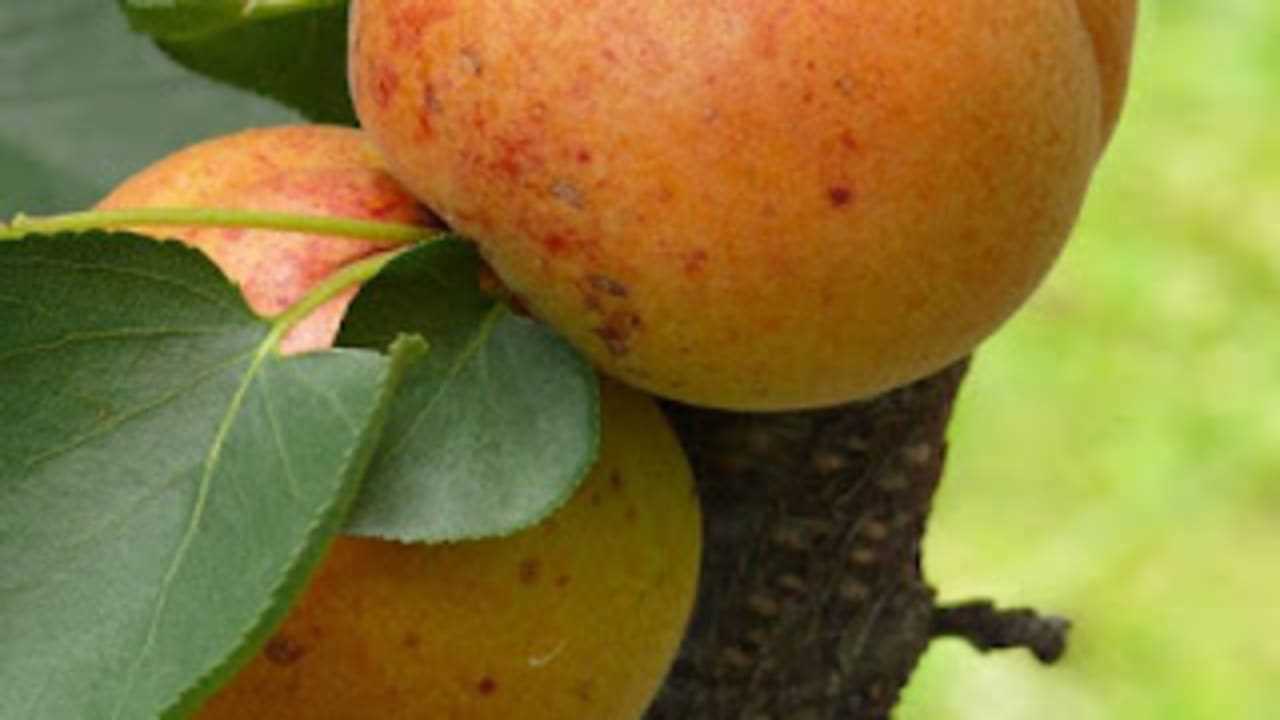
One possible reason why apricot trees may not bear fruit is due to an insufficient nutrient supply. Apricot trees require a balanced and adequate supply of nutrients in order to produce healthy and fruitful trees. Lack of essential nutrients can result in poor growth, weak branches, and a decrease in fruit production.
Soil Composition: It is important to ensure that the soil in which the apricot trees are planted has the necessary nutrients. Conduct a soil test to determine the nutrient content and pH level of the soil. The ideal pH for apricot trees is between 6.0 and 7.5. If the pH is outside this range, it may be necessary to amend the soil with lime or sulfur to adjust the pH level.
Fertilization: Regular fertilization is crucial for providing apricot trees with the necessary nutrients. Use a balanced fertilizer containing nitrogen (N), phosphorus (P), and potassium (K) in the ratio recommended for fruit trees. Apply the fertilizer in early spring before new growth starts and again in late summer or early fall to promote healthy growth and fruit production. Follow the manufacturer’s instructions for application rates.
Common Nutrient Deficiencies:
Apricot trees may experience specific nutrient deficiencies which can affect fruit production. Some common deficiencies and their symptoms include:
- Nitrogen deficiency: Lack of nitrogen can lead to weak growth, pale leaves, and reduced fruit size. To remedy this, apply a nitrogen-rich fertilizer or incorporate organic matter into the soil.
- Phosphorus deficiency: Insufficient phosphorus can result in stunted growth, weak roots, and delayed fruit ripening. Use a fertilizer with higher phosphorus content or add bone meal to the soil.
- Potassium deficiency: A lack of potassium may cause yellowing of leaves, weak branches, and reduced yield. Apply a fertilizer with a higher potassium content or add potash to the soil.
Proper Watering: Adequate water supply is crucial for nutrient uptake by the tree’s roots. Apricot trees should be watered regularly, especially during dry periods. However, be cautious not to overwater, as it can lead to root rot and other issues. Use mulch around the base of the tree to help retain moisture and regulate soil temperature.
| Nutrient | Recommended Ratio |
|---|---|
| Nitrogen (N) | 50-100 parts per million (ppm) |
| Phosphorus (P) | 10-25 ppm |
| Potassium (K) | 100-200 ppm |
Question-answer:
Why is my apricot tree not bearing fruit?
There could be several reasons why your apricot tree is not bearing fruit. One common reason is lack of pollination. Apricot trees require cross-pollination from another apricot tree to produce fruit. If there are no other apricot trees nearby, your tree may not be getting pollinated. Other factors that may prevent fruiting include improper pruning, lack of sunlight, nutrient deficiency, and disease.
How can I ensure pollination for my apricot tree?
To ensure pollination for your apricot tree, you need to have another apricot tree of a compatible variety planted nearby. Bees and other pollinators will carry the pollen from one tree to another, allowing for pollination to occur. If you do not have another apricot tree, you can try hand pollination by using a small brush to transfer pollen from one flower to another. However, it’s best to have a second tree for optimal pollination and fruit production.
Can I grow an apricot tree indoors?
Apricot trees are best suited for outdoor growing as they require a lot of sunlight and space to grow. Trying to grow an apricot tree indoors can be challenging as they need a dormant period during winter to properly fruit. However, if you have a spacious greenhouse with plenty of sunlight, you may be able to successfully grow an apricot tree indoors. Just make sure to provide it with the necessary care, including regular pruning, pollination, and proper soil and watering.
What kind of pruning is necessary for apricot trees?
Pruning plays a crucial role in the fruiting of apricot trees. It’s important to prune apricot trees during their dormant period in late winter or early spring. Remove any dead or damaged branches, as well as any branches that are crossing or rubbing against each other. Opening up the center of the tree by removing crowded branches can improve air circulation and sunlight penetration, leading to better fruit production. Additionally, thinning out the branches can help with fruit size and quality.
Is it possible to grow apricots from seeds?
Yes, it is possible to grow apricots from seeds, but keep in mind that the resulting tree may not produce the same quality of fruit as the parent tree. Apricots grown from seeds are usually grown for ornamental purposes rather than fruit production. If you want to grow apricots for fruit, it’s best to obtain a grafted tree from a reputable nursery. This ensures that you will have a variety that is known for good fruit production.
What are some common diseases that can affect apricot trees?
Apricot trees are susceptible to several diseases, including brown rot, leaf spot, and powdery mildew. Brown rot is a fungal disease that causes fruit rot, while leaf spot causes dark spots to appear on the leaves. Powdery mildew is a fungal disease that covers the leaves and shoots with a white powdery substance. To prevent these diseases, it’s important to provide proper care for your apricot tree, such as regular pruning, ensuring good air circulation, and using appropriate fungicides if necessary.







